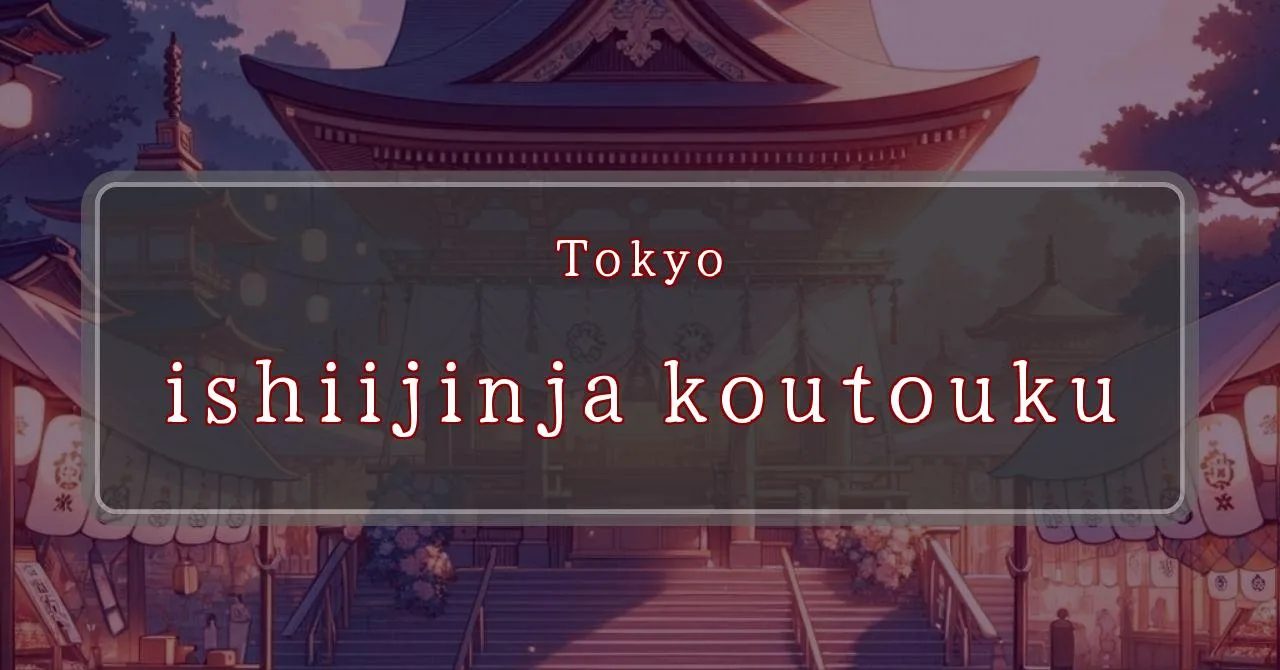Divine rice paddles and healing powers await at Kameido Ishii Shrine.
Basic Information
Nestled in the heart of Tokyo’s vibrant Koto ward, Kameido Ishii Shrine stands as a beacon of healing and reverence. Its origins shrouded in the mists of time, the shrine’s history stretches back to the Heian period, with legends tracing its founding to the renowned弘法大師, also known as Kobo Daishi, in the year 811.
- Address: 4-37-13 Kameido, Koto-ku, Tokyo
- Phone Number: Unavailable
- Access: A leisurely 9-minute walk from Kameido Suijin Station on the Tobu Kameido Line or a scenic 11-minute stroll from Kameido Station’s north exit via JR Sobu Line.
- Festival Days: September 28th, 2024 (Reiwa 6)
Main Events and Attractions of the Festival
The annual Kameido Ishii Shrine Festival, held on September 28th, 2024, promises a vibrant tapestry of events and attractions that celebrate Japanese culture and traditions.
Oshamoji-sama and Imo Matsuri (Divine Rice Paddle and Potato Festival)
This festival’s highlight is the unique Oshamoji-sama and Imo Matsuri, a celebration of healing and bountiful harvests. The name “Oshamoji-sama” refers to the sacred rice paddles enshrined at the shrine, believed to possess the power to cure illnesses, particularly coughs and respiratory ailments. During the festival, visitors can borrow these divine rice paddles from the shrine, taking them home to enshrine as temporary deities. Once their ailments are healed, they return to the shrine with a new rice paddle as an offering, expressing gratitude for the healing powers received.
- Content: A festival celebrating healing and bountiful harvests
- Features: Borrowing and returning of sacred rice paddles, offering of new rice paddles as gratitude for healing
Food Stalls and Traditional Delicacies
The festival grounds come alive with an array of food stalls offering a tempting selection of traditional Japanese delicacies. From savory grilled dishes to sweet treats, there’s something to satisfy every palate. Indulge in the flavors of freshly made dango, takoyaki, and yakisoba, or savor the sweetness of fluffy cotton candy and refreshing shaved ice.
- Content: A variety of food stalls offering traditional Japanese delicacies
- Features: Grilled dishes, dango, takoyaki, yakisoba, cotton candy, shaved ice
Cultural Performances and Demonstrations
Throughout the festival, visitors can immerse themselves in the rich cultural heritage of Japan through captivating performances and demonstrations. Traditional music and dance troupes take to the stage, showcasing the beauty and diversity of Japanese performing arts. Skilled artisans demonstrate their mastery of ancient crafts, inviting visitors to appreciate the intricate details and techniques passed down through generations.
- Content: Cultural performances and demonstrations showcasing Japanese heritage
- Features: Traditional music and dance, craft demonstrations
is dedicated to three deities, each embodying distinct aspects of nature and healing:
Together, these deities are believed to bestow blessings of healing, protection, and prosperity upon those who seek their favor.
Origin and History
The origins of Kameido Ishii Shrine are shrouded in mystery, with its history stretching back to the mists of time. Legends attribute its founding to the renowned弘法大師, also known as Kobo Daishi, in the year 811. However, archaeological evidence suggests that the site may have been a sacred place of worship even earlier, dating back to the Stone Age.
Throughout its long history, Kameido Ishii Shrine has undergone several renovations and expansions. In the 17th century, the shrine was relocated to its current location to make way for the construction of Kameido Tenjin Shrine. Despite these changes, the shrine has remained a beloved place of worship for locals and visitors alike, attracting those seeking healing, solace, and divine guidance.
Tips and Notes for Visitors
To fully appreciate the beauty and significance of Kameido Ishii Shrine, here are a few tips for visitors:
- Dress respectfully: As with any religious site in Japan, visitors are expected to dress respectfully when visiting Kameido Ishii Shrine. Avoid wearing shorts, tank tops, or other casual attire.
- Observe proper etiquette: When entering the shrine grounds, remember to purify your hands and mouth at the chozuya (ablution pavilion) before approaching the main shrine building.
- Offer your prayers and gratitude: Take a moment to offer your prayers and express your gratitude to the deities enshrined at the shrine. You can do this by clapping your hands twice, bowing deeply, and then clapping your hands once more.
- Receive a fortune: If you wish, you can purchase a fortune (omikuji) at the shrine office. These fortunes provide guidance and insights into your current situation and future prospects.
Parking Information
Unfortunately, Kameido Ishii Shrine does not have its own dedicated parking lot. However, there are several public parking lots andコインパーキング (coin-operated parking) facilities in the surrounding area. Visitors are advised to use public transportation or park their vehicles at a nearby parking facility and walk to the shrine.
Popular Stalls and Food Carts in Recent Years
| Type of Stall | Description |
|---|---|
| Takoyaki | A staple at Japanese festivals. Characterized by a crispy outside and a creamy inside. |
| Jaga Butter | A simple yet popular snack of hot potatoes lavishly topped with melted butter. |
| Baby Castella | Small castella cakes, sweet and fluffy treats enjoyed by children and adults alike. |
| Grilled Ayu with Salt | Fresh ayu fish grilled whole with salt, a savory taste of Japanese summer. |
| Shaapin | A unique gourmet item influenced by foreign cuisine, with a chewy skin wrapping the filling. |
| Okonomiyaki | A Japanese grilled dish where you often choose your own ingredients for a personalized flavor. |
| Cotton Candy | A fluffy, sweet snack that’s extremely popular with children. |
| Chocolate Banana | A banana coated in chocolate, a fun and visually appealing dessert. |
| Kushiyaki | Various types of ingredients skewered and grilled, an easy-to-enjoy snack. |
| Yakisoba | Fried noodles mixed with a special sauce, a fast food favorite in Japan. |



